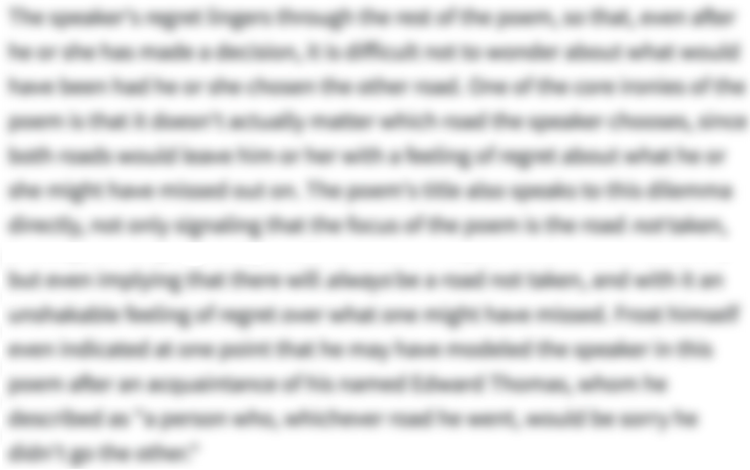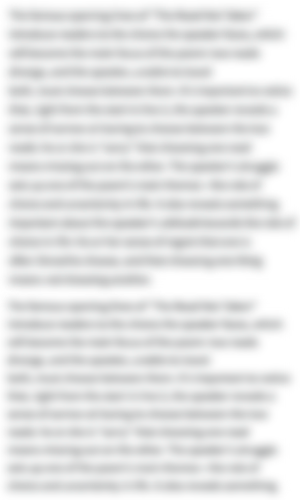The Full Text of “The Tide Rises, the Tide Falls”
1The tide rises, the tide falls,
2The twilight darkens, the curlew calls;
3Along the sea-sands damp and brown
4The traveller hastens toward the town,
5 And the tide rises, the tide falls.
6Darkness settles on roofs and walls,
7But the sea, the sea in darkness calls;
8The little waves, with their soft, white hands,
9Efface the footprints in the sands,
10 And the tide rises, the tide falls.
11The morning breaks; the steeds in their stalls
12Stamp and neigh, as the hostler calls;
13The day returns, but nevermore
14Returns the traveller to the shore,
15 And the tide rises, the tide falls.
-
“The Tide Rises, the Tide Falls” Introduction
-
"The Tide Rises, the Tide Falls" is a poem from Ultima Thule (1880), one of the last collections published by American poet Henry Wadsworth Longfellow (1807-1882). The poem tells the story of a mysterious "traveller" who rushes along a shore as the sun sets. Night falls, the rising tide washes the traveller's footprints from the sand, and the next morning the world goes on as usual—but the traveller never reappears. The poem's brief, eerie tale symbolizes the journey from life to death, perhaps indirectly reflecting on Longfellow's own impending mortality.
-
-
“The Tide Rises, the Tide Falls” Summary
-
The tide goes in and out, the evening gets darker, and a seabird calls out. A traveler hurries along the wet, brown sand toward a nearby town. The tide goes in and out.
Darkness falls on the buildings of the town. The sounds of the sea continue in the darkness. Small waves, with their soft foam, gently land on the shore and erase the footprints the traveler left in the sand. The tide goes in and out.
Morning arrives. In a stable in the town, horses stamp their hooves and neigh as the stableman calls out. Daytime returns, but the traveler never returns to the shore. The tide goes in and out.
-
-
“The Tide Rises, the Tide Falls” Themes
-

The Mystery and Finality of Death
“The Tide Rises, the Tide Falls” tells the tale of a “traveller” who arrives at a shore, hurries to a nearby town, and never returns the way they came. The poem can be read as an extended metaphor for the brevity of human life and the mystery of death—something the poem presents as unknowable, inevitable, and final.
The speaker doesn’t specify the location of the shore, the name of the town, or any personal information about the traveller apart from the fact that this person is in a hurry. This deliberate vagueness helps establish the poem’s mysterious atmosphere, which, in turn, evokes the mysteriousness of death itself. Given that the traveller’s journey can be taken as a metaphor for the swift passage of life, the fact that readers don’t know where this person is going suggests that the living don’t know what happens to the dead.
That the traveller's journey takes place as the “twilight darkens” adds to the air of gloom and mystery, and symbolically suggests that the traveller is in the “twilight,” or late stage, of their journey—that this person is in the “twilight” of life and quickly closing in on the darkness of death. When darkness then "settles" across the scene in the second stanza, the implication is thus that the traveller has died—that they've travelled somewhere the reader can't follow.
Rather than following the traveller, then, the poem keeps describing the shore this person has left behind. The sun rises again the next day and activity on land and sea continues as normal, but the traveller never reappears in the poem. This absence reflects the mystery of what happens (where people “travel” to) when they die.
The sea's erasure of the traveller's footprints, in turn, implies the total erasure of the traveller from the living world. Death, here, is something irreversible and final. The closing repetition of “the tide rises, the tide falls” adds to this eerie sense of finality. Rather than showing what’s happened to the traveller on land, the poem shows what’s (still) happening at sea—that is, it shows “the world moving on” after one person’s death.
The speaker's withholding of information is key to the poem's meaning. The speaker frames the traveller as a quickly passing stranger whose fate is beyond description or understanding. The purpose of the traveller's journey remains unknown, as if unimportant beside the larger truth that the journey (i.e., life itself) is brief and not to be repeated. The journey is symbolic, with the traveller’s unexplained rush toward an unknown fate representing life’s swift movement toward the mystery of death.
- See where this theme is active in the poem.
-

Humanity vs. Nature
"The Tide Rises, the Tide Falls" contrasts the traveller's quick journey with the endless, ongoing cycles of the natural world. Nature in the poem is so vast and powerful that it seems to engulf or erase the specifics of an individual's life and death. The poem thus portrays human life as insignificant in the face of the natural world, which continues on totally unaffected by the traveller's disappearance.
The sea is a constant presence in the poem, rising and falling no matter what the traveller does. The traveller's implied death doesn't change anything when it comes to nature, which moves through its phases as usual in the traveller's absence. Yet while the traveller in no way changes the sea, the sea erases all evidence of the traveller’s passing: the waves "efface," or erase, "the [traveller's] footprints in the sands." This conveys the idea that nature soon wipes away any mark people make on the world.
So much greater is nature's power compared to that of human beings that it doesn't even take a strong storm to do this. The personified waves have "soft, white hands" that easily remove all traces of the traveller. The fact that the traveller's journey is frantic and quick (notice how this person "hastens") also contrasts with the calmer, gentler rhythms of nature. Where humanity is pressed for time, it seems nature has all the time in the world.
The endless cycles of the natural world reinforce the transience of human life. The traveller moves only in one direction, but the tide shifts back and forth and the sun rises and sets. The traveller’s journey thus stands out as a one-time event that does not repeat; the world goes on and the "day returns," even though the traveller never does. Human life, the poem thus implies, is a one-way journey from birth to death—a journey that means little in the face of nature's permanence.
- See where this theme is active in the poem.
-
-
Line-by-Line Explanation & Analysis of “The Tide Rises, the Tide Falls”
-
Line 1
The tide rises, the tide falls,
The poem opens on a beach at night. The exact location is unidentified, just as the traveller and the town will later go unnamed. These generic details make the poem's scenario seem timeless, universal, and potentially symbolic.
Line 1 repeats the title word for word, establishing a refrain that will echo at the end of each stanza. This repeated line, with its strong rhythm and description of a repetitive process (that is, rising and falling), provides a steady "backdrop" against which the poem's changes take place.
Rhythmically, the line itself seems to "rise" toward and "fall" away from the grammatical pause (caesura) in the middle of the line. This pause is punctuated by a comma that links two independent clauses (clauses that could stand alone as complete sentences). A semicolon would be the more standard punctuation to use here, but the comma creates a softer pause, a smoother shift, that seems to fit the way the tide flows smoothly back and forth.
Line 1 establishes a strong meter of four beats per line, which continues throughout the poem:
The tide rises, the tide falls,
The twilight darkens, the curlew calls;The poem's meter is accentual but not quite syllabic. In other words, the number of stressed (accentuated) syllables remains constant from line to line, but the total number of syllables and the position of stressed syllables do not. This first line contains seven syllables, while the rest contain either eight or nine. Every line, however, contains four strong stresses. (Parts of the poem, such as lines 3 -4, follow the accentual-syllabic meter called iambic tetrameter.)
The language of line 1 is plain, like the language of the poem as a whole, but it immediately suggests symbolic possibilities. The ebb and flow of ocean tides is a conventional symbol of change in general, including changes of human life or human fortune (as in an expression like "a rising tide lifts all boats"). It's also a classic example of a cyclical process in nature. Between the title and the identical first line, the reader may already sense that this poem will deal with change or cycles of change.
-
Line 2
The twilight darkens, the curlew calls;


Unlock all 397 words of this analysis of Line 2 of “The Tide Rises, the Tide Falls,” and get the Line-by-Line Analysis for every poem we cover.
Plus so much more...
Get LitCharts A+ -
Lines 3-5
Along the sea-sands damp and brown
The traveller hastens toward the town,
And the tide rises, the tide falls. -
Lines 6-7
Darkness settles on roofs and walls,
But the sea, the sea in darkness calls; -
Lines 8-10
The little waves, with their soft, white hands,
Efface the footprints in the sands,
And the tide rises, the tide falls. -
Lines 11-12
The morning breaks; the steeds in their stalls
Stamp and neigh, as the hostler calls; -
Lines 13-15
The day returns, but nevermore
Returns the traveller to the shore,
And the tide rises, the tide falls.
-
-
“The Tide Rises, the Tide Falls” Symbols
-

The Sea and the Seashore
The sea and the seashore in this poem are charged with symbolism. The rise and fall of the tides represents broader natural cycles of change (day turning to night, summer to fall, etc.) and, in turn, nature's indifference to human life (in that nature keeps going no matter what happens to human beings).
The "little waves" that erase the traveller's footprints on the shore stand in for all the natural forces—from erosion and weather to time itself—that wipe away the traces human beings leave on the world. That the waves are gentle suggests both nature's power and humans' fragility; it doesn't take much to wipe away a legacy, it seems, and nature has all the time in the world to do so.
The sea, and specifically the tide, also represents the cycle of life. In evolutionary terms, the sea is the origin point of earthly life, and it's often symbolically associated with the womb. In the poem, the sea may be where the traveller is arriving from (i.e., on a journey by ship), and it's certainly what the traveller's headed away from. As the traveller hurries from the shore toward the town into which they seem to vanish, their movement evokes the progress from birth to death. It calls to mind common metaphors like "these earthly shores," which compare life to a location where we arrive, sojourn briefly, and pass.
The sea and town also set up a contrast between the natural and civilized (human) worlds. Unlike the hurrying traveller—and even the busy hostler and impatiently stamping horses in town—the sea patiently, unchangingly rises and falls. In this way, it comes to symbolize time itself, which goes on no matter what, and makes everything it gives rise to seem insignificant by comparison.
- See where this symbol appears in the poem.
-

Darkness and Light
The poem symbolically associates darkness and light with death and life: twilight (semi-darkness) signals that death is near, the fall of darkness signals that the traveller has died, and the return of day without the traveller signals that life goes on after the traveller's death.
Like the sea erasing the footprints in the sand, the darkening sky seems to erase the traveller's presence and identity. Twilight also suggests the mystery, eeriness, and transitional nature of this person's journey. As day changes to night, the traveller crosses from one state of being to another. Night settling over the town marks the end of their journey and, symbolically, the end of life. The fact that you can't see in the dark also associates darkness with the mystery of death.
The break of day suggests life going on, renewing itself in spite of individual death. Morning may not have come for the traveller, but it has come for other humans and animals, and for the world as a whole.
- See where this symbol appears in the poem.
-

The Traveller's Journey
The traveller represents human life in general. The traveller's journey is thus the journey of life, and the traveller's footprints are the traces a life leaves behind.
Because the poem provides so little information about the traveller's origins, identity, and intentions, it strongly encourages the reader to interpret their role as generalized and symbolic. This traveller "hastens" along the shore just as people hurry through life—or as life hurries people—toward death. (Conventional expressions like "these earthly shores" have long compared the world to a shore in which people wash up, exist for a time, then depart.) The sea's erasure of the traveller's footprints mimics the way the world eventually wipes away any mark people leave on it.
- See where this symbol appears in the poem.
-
-
“The Tide Rises, the Tide Falls” Poetic Devices & Figurative Language
-
Alliteration
The poem is jam-packed with alliteration (as well as its close cousin consonance). For example, note the many /t/ sounds throughout the first stanza in words like "tide," "twilight," "toward," and "town." The insistence on this sharp, quick sound adds to the poem's repetitive tone. That is, the return to the same sound over and over again subtly reflects the tidal cycle being described.
More generally, alliteration makes the poem's images all the more striking for the reader. The harsh /c/ sound of "curlew calls," for examples, evokes the loud call of the bird, while the gentle, breathy /w/ sounds of "waves, with [...] white hands" evokes the softness with which the waves erase the traveller's footprints. The muffled /f/ of "efface" and "footprints" has a similar effect (note that we've marked the /f/ sound in "efface" as alliterative because it falls on a stressed syllable—efface—which is considered a broad form of alliteration). Alliteration also helps illustrate the heavy stamping of the horses in the phrase "the steeds in their stalls / Stamp."
Alliteration also simply draws more attention to alliterative syllables, which ring out all the more clearly in the readers' ear. These syllables are all generally stressed in the poem's meter. In general, then, the poem's intense alliteration creates heightened language and a sense of relentless rhythm and momentum throoughout.
- See where this poetic device appears in the poem.
-
Assonance


Unlock all 223 words of this analysis of Assonance in “The Tide Rises, the Tide Falls,” and get the poetic device analyses for every poem we cover.
Plus so much more...
Get LitCharts A+ -
Repetition
-
Antithesis
-
Parataxis
-
Sibilance
-
Personification
-
Metaphor
-
Allusion
-
-
“The Tide Rises, the Tide Falls” Vocabulary
Select any word below to get its definition in the context of the poem. The words are listed in the order in which they appear in the poem.
- Curlew
- Hastens
- Efface
- Hostler
- Nevermore
Curlew-
A kind of migratory shorebird. Many types of curlew exist worldwide, and Longfellow lived in both the U.S. and Europe, so the reference itself doesn't narrow down the poem's location or the species the poet had in mind. However, he wrote the poem in Massachusetts, where he lived most of his life, and Numenius americanus (the long-billed curlew) was common in the New England of his era.
- See where this vocabulary word appears in the poem.
-
Form, Meter, & Rhyme Scheme of “The Tide Rises, the Tide Falls”
-
Form
The poem consists of three five-line stanzas, which function as the beginning, middle, and end of a brief story about a traveller. Though the poem doesn't adhere to a standard, named form, Longfellow classified it as one of his "Folk-Songs" in the volume Ultima Thule.
The rhyming third and fourth line of each stanza function as a couplet that directly concerns the traveller, whereas the surrounding lines describe the larger context surrounding the traveller. The fifth line of each stanza—indented to help show its recurrence and importance—is a refrain also found in the poem's title and first line. It emphasizes the largest context of all: a vast, surrounding, indifferent natural world that keeps cyclically changing no matter what the traveller does.
-
Meter
The poem is written in a four-beat accentual meter with lines ranging from seven to nine syllables. To understand what this means, read the poem aloud and tap your hand on a table (or your foot on the floor, etc.) each time you read a strongly stressed syllable. You'll find yourself tapping four times per line—despite lines having a varying number of syllables, and despite those stressed syllables appearing at different moments in each line. Here's the first stanza as an example:
The tide rises, the tide falls,
The twilight darkens, the curlew calls;
Along the sea-sands damp and brown
The traveller hastens toward the town,
And the tide rises, the tide falls.Meters that are accentual but not strictly syllabic (meaning there aren't a strict number of syllables per line) are often found in ballads, folk verse, nursery rhymes, and the like. With its refrain, strong rhymes, simple language, and symbolic story, this poem has elements of all these genres. In fact, when publishing it as part of his collection Ultima Thule, Longfellow grouped it in a section called "Folk-Songs."
The third and fourth lines of each stanza, which directly concern the traveller, tend to fall into regular iambic tetrameter, whereas the other lines have a more irregular "swing" or lilt to them. This means the lines about the traveller have four iambs—four poetic feet with a da-DUM pattern, resulting in eight syllables total. Take lines 3 and 4 from the stanza above:
Along | the sea- | sands damp | and brown
The trav- | eller hast | ens toward | the town,This helps set the traveller apart from the surrounding context, and may even suggest a contrast between the traveller's brisk, efficient movements and the rougher but still rhythmic sway of the sea. (The exception is the third line of the second stanza, which has an extra unstressed syllable in the third foot and an extra stressed syllable in the last—"The lit- | tle waves, | with their soft, | white hands." But this line concerns the sea as well as the traveller!)
-
Rhyme Scheme
The rhyme scheme of the full poem is:
AABBA AACCA AADDA
The first, second, and fifth lines of each stanza rhyme with each other and with the equivalent lines of the other two stanzas (they all shared the A rhyme sound in the scheme above). The rhyme-word in the second and fifth line of each stanza is the same: "calls" and "falls," respectively. Meanwhile, the third and fourth lines of each stanza rhyme with each other but not with the equivalent lines in the other stanzas (brown/town, hands/sands, and nevermore/shore).
This is a tightly woven scheme that maximizes emphasis on the A-rhymes, which both bridge the stanzas and envelop the middle rhymes within each stanza. In particular, it places enormous weight and emphasis on the rhyme-word "falls," which concludes the title, the first and final lines of the opening stanza, the final line of the middle stanza, and the final line of the poem. This scheme helps drive home the fact this is a poem about cycles of rising and falling, but with a special emphasis on falling, including the fall (ending) of an individual life.
This scheme also highlights the three "calls," which appear to receive no response. By completing the rhyme, the word "falls" serves as a kind of anticlimactic answer to each call.
The BB, CC, and DD couplets in the middle of the stanzas are the lines that explicitly concern the traveller. The first couplet shows the traveller hurrying away from shore; the second shows the erasure of their footprints; the third announces that they never return to shore. Together, these lines introduce and send off the traveller with maximum efficiency (in keeping with the idea that the traveller "hastens," or rushes, through their journey). Their rhymes are outnumbered and all but overpowered by the repetitive A-rhymes. At the same time, their rhymes are unique within each stanza, just as the traveller's journey is the unique element of this scene—it's the one thing that doesn't repeat. In all these ways, the poem's rhyme scheme reinforces its picture of individual human life as small and fleeting in the midst of a large and constant natural world.
-
-
“The Tide Rises, the Tide Falls” Speaker
-
The speaker of the poem is unidentified and does not address a particular audience. Their perspective is broad and impersonal, like that of a "third-person limited" narrator in fiction. They provide no information about the traveller's thoughts and feelings—or anyone else's (including their own). Similarly, their tone is calm and their diction plain. Their few rhetorical flourishes consist of repetitions (such as the refrain in each stanza or "the sea, the sea" in line 7) that add to the strong, lulling rhythm of the poem—the kind one might find in an old ballad or nursery rhyme. These choices fit well with the poem's generalized, fable-like narrative and detached, impersonal attitude toward life and death.
-
-
“The Tide Rises, the Tide Falls” Setting
-
The setting of the poem consists of a sea, a shore, and a nearby town. It's the end of the day—"twilight"—and the world is getting darker as the sun sets, with the only sounds coming from the waves and a bird. The traveller thus seems totally isolated while rushing across the "damp," "brown" sand along the shore. Night falls across the land, and the tide goes in and out. When the sun rises again the next day, the sounds of the bustling morning fill the air—but the traveller is nowhere to be found.
The poem's setting has a few specific features, such as the curlew on the shore and the hostler, horses, and stalls in the town. However, these details do not help pinpoint a specific location or period. Species of curlew are found worldwide, and hostlers and stables were standard features of towns prior to the 20th century. The speaker intends to depict a highly generic coastal scene, of any era, during the hours between twilight and daybreak.
This generic quality—the sense that the setting is "anytime" and "anyplace," just as the traveller could be "anyone"—encourages readers to take the poem as being symbolic rather than strictly literal. The shore suggests the earth on which the brief journey of our lives plays out. The changing sky and sea are the broad natural context within which all human activity takes place. The tides and the town that remain active after the traveller's disappearance represent the world that goes on after an individual's death.
-
-
Literary and Historical Context of “The Tide Rises, the Tide Falls”
Literary Context
"The Tide Rises, the Tide Falls" appears in the collection Ultima Thule (1880), which Longfellow published two years before his death and whose title hints that he may have expected it to be his last (ultimate) book. The poem's themes—the mystery of death, the brevity and smallness of human life—may be, in part, the elderly poet's reflection on his own mortality. This would align it with other poems in the same collection, including the "Dedication" poem, in which an elderly speaker reflects on lost youth and approaching death through the extended metaphor of an ocean voyage.
The poem's vision of human life as fundamentally trivial and fleeting makes for an interesting juxtaposition with Longfellow's public image. Longfellow was arguably the most famous American poet of his century, a celebrity writer with a wide audience on both sides of the Atlantic. He was the best-known member of a literary movement critics have called the Fireside Poets. This group helped popularize both New England literature and American literature more generally.
As he approached death, Longfellow could reasonably have assumed he'd left a lasting mark on the world. Yet "The Tide Rises, the Tide Falls" seems to express a fear that his impact (his footprints on the shore of the world) would vanish—because any human life dwindles to insignificance in the grand scheme of things.
As well as being a so-called Fireside Poet, Longfellow is considered an American adopter of the 19th-century European poetic movement known as Romanticism. Among other things, the British Romantic poets (including William Wordsworth, John Keats, and Percy Bysshe Shelley) were known for their reflections on the relationship between humanity and nature—particularly for poems that situated lonely human figures in imposing natural landscapes (lakes, oceans, mountains, forests, etc.).
"The Tide Rises, the Tide Falls," with its tiny traveller and huge seascape, draws partly on this tradition. It also contains possible echoes of Shakespeare's Hamlet (in which Hamlet compares death to the "undiscovered country" from which "no traveller returns") and Edgar Allan Poe's "The Raven" (with its ominous "Nevermore" refrain; Poe, too, is often classified as an American Romantic poet).
Historical Context
Longfellow's life provided many occasions to reflect on mortality. For example, both of his wives died under tragic circumstances: the first, Mary, after a miscarriage; the second, Frances, in a freak household fire in which he, too, was badly burned. Both tragedies sent him into spells of terrible grief. He confessed in his sonnet "The Cross of Snow," written 18 years after Frances's death, that he had never gotten over losing her. "The Tide Rises, the Tide Falls," published three years after "The Cross of Snow," emerges from this same period of protracted mourning. (It also features a vanished "traveller," so perhaps it's relevant that Mary died while traveling abroad.)
Readers can also see echoes of the time in which Longfellow wrote in the poem's references to "steeds," "stalls," and a "hostler." In Longfellow's time, a hostler (or ostler) was similar to a valet at a modern hotel or restaurant. Hostlers supervised stables, especially at inns, where they tended to guests' horses. In the poem, the appearance of the hostler and impatient "steeds" (horses) indicates that at least some people in town are getting ready to leave for somewhere. The implication is that the "traveller" is not among them, because the traveller's journey (i.e., life) has ended.
Historical context might also suggest some practical, as opposed to purely symbolic, reasons for hurrying to reach a town by nightfall. Before electric lighting became widespread in the late 19th and early 20th centuries, streets were often poorly lit, so towns were less active and more dangerous at night. Transportation was also more limited in the later hours (horses didn't have electric headlights). In other words, while the poem's "traveller" may be racing toward a metaphorical appointment with the "darkness," travelers in general, in Longfellow's day, would have been (even) more inclined than their modern counterparts to reach their destinations by evening. After twilight, there were fewer things to do, fewer ways to get around, and more ways to get hurt.
-
More “The Tide Rises, the Tide Falls” Resources
-
External Resources
-
The Maine Historical Society and Longfellow — Learn more about the poet's life and work courtesy of the Maine Historical Society.
-
Longfellow's Life Story — Read the Poetry Foundation's biography of Longfellow, including context for the collection in which "The Tide Rises, the Tide Falls" first appeared.
-
Lecture on Longfellow's Life — Watch Longfellow scholar Charles C. Calhoun deliver a lecture on the poet's life and work.
-
Early Text of "The Tide Rises, the Tide Falls" — Read the Internet Archive's scan of the poem in an early (1882) edition of Ultima Thule, the collection in which it was first published.
-
A Guide to the Fireside Poets — Read the Academy of American Poets' introduction to the "Fireside Poets," a school of 19th-century American writers in which some critics have grouped Longfellow.
-
-
LitCharts on Other Poems by Henry Wadsworth Longfellow
-








